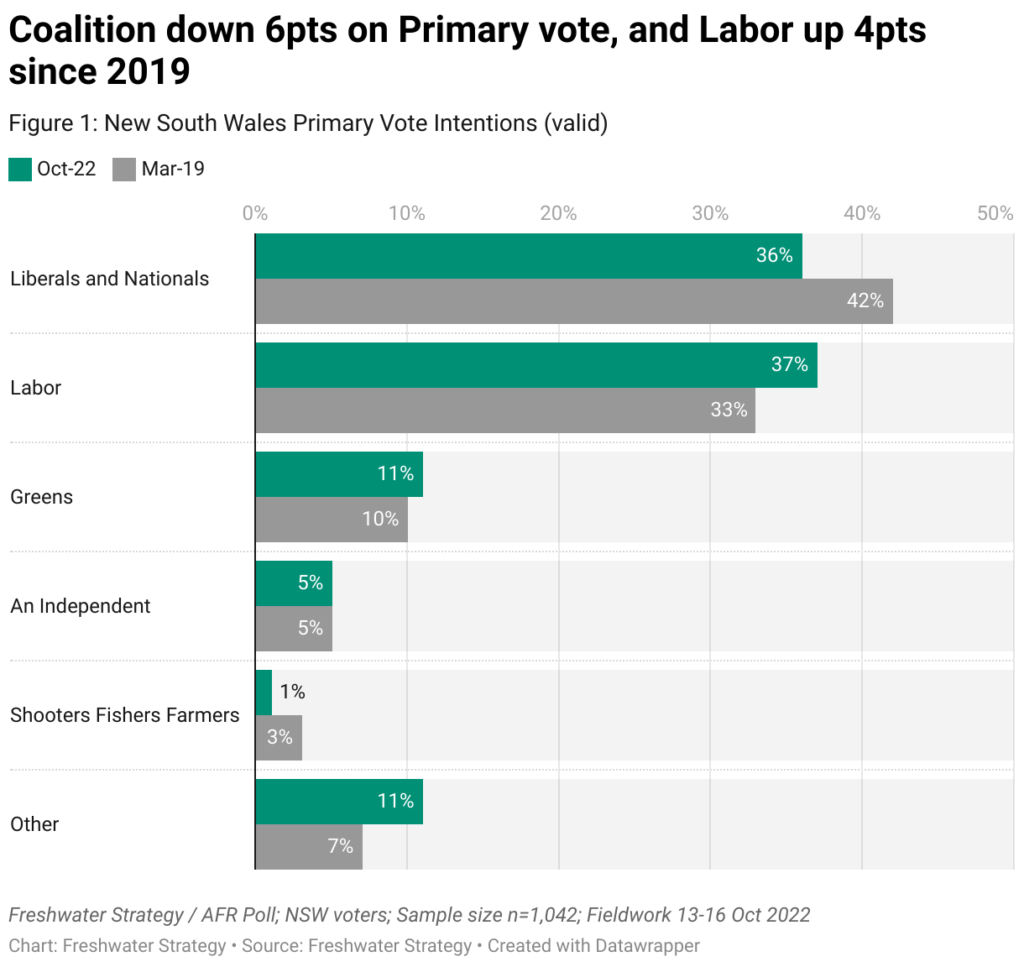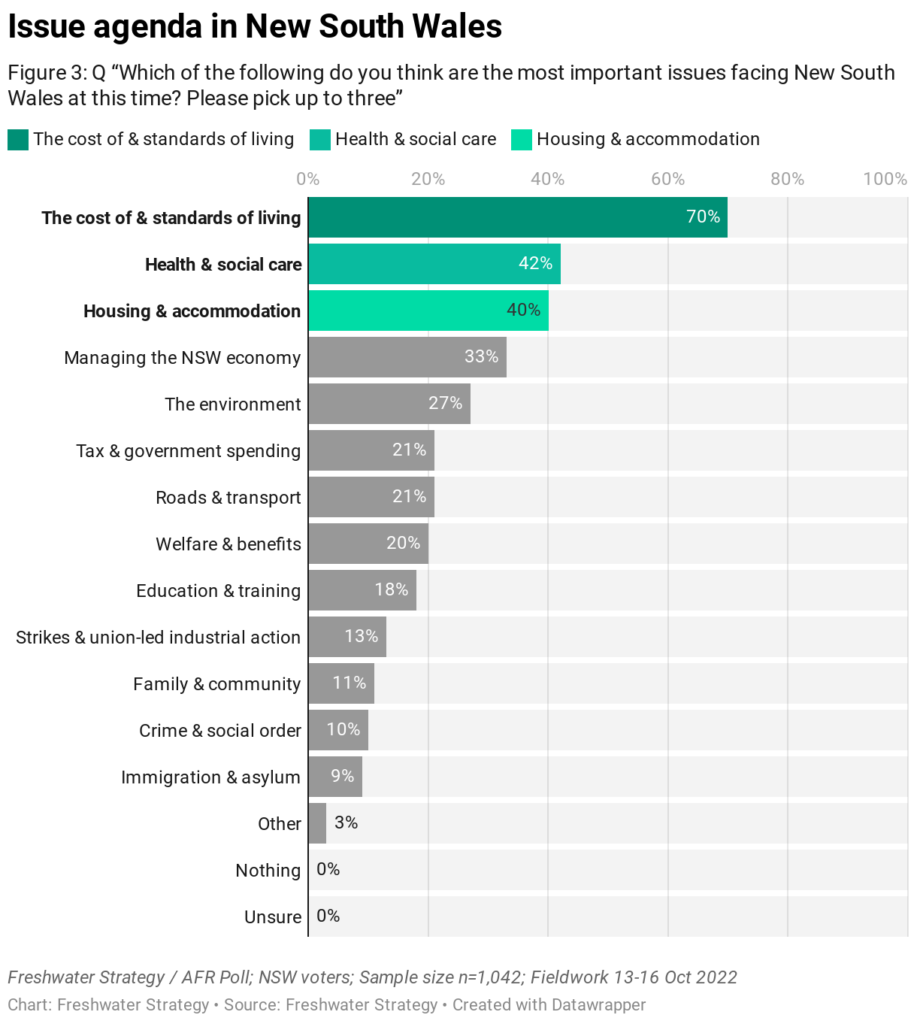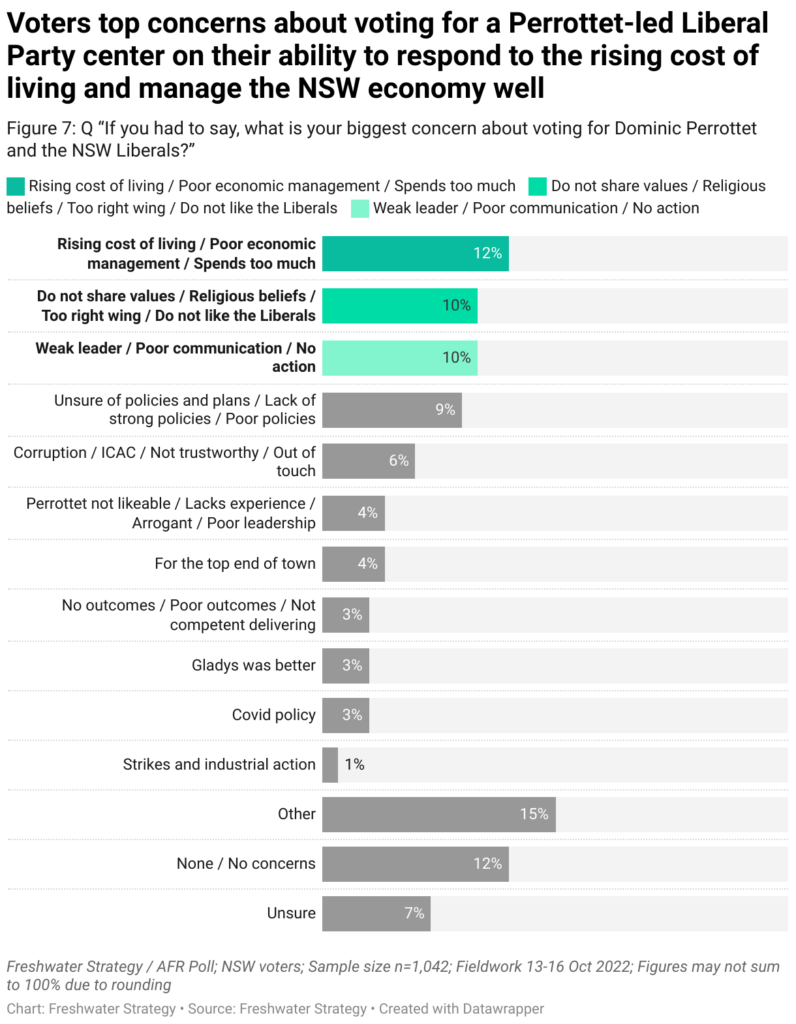Summary:
- Labor on course for a majority in NSW – AFR / FWS Poll shows that NSW Labor is up 4pts on Primary vote since 2019, to 37%, up 6pts on TPP to 54%, and is set to form majority government at the next election, with current polling results projecting approx 47-49 seats in lower house^
- Action to maintain living standards defining election issue – How the government / opposition respond to the rising cost of living and deteriorating living standards is the most important factor for voters in deciding how to vote at the state election in March
- Minns is preferred Premier, but lead fragile as voters yet to make up their mind – Opposition leader, Chris Minns is preferred Premier for NSW voters (41%), 3pts ahead of Perrottet (38%). But one third of voters (29%) have never heard of him
- Lack of visibility holding Minns back with voters – Voters’ biggest concern about voting for Minns and NSW Labor is their lack of visibility, plans, and how the opposition leader presents. For Perrottet, voters’ biggest concerns center on the impending current cost of living crisis and the Government’s economic management
Vote intentions
The AFR / Freshwater Strategy NSW poll, conducted 13-16 October, puts Chris Minns’ NSW Labor on Primary vote of 37%, up 4pts since 2019. The Coalition (Liberals and Nationals) Primary vote is down 6pts since 2019, to 36%. The Greens are up just 1pt to 11%. Support for an Independent candidate was unchanged since 2019 (5%), and 5% of voters said that they were firmly undecided on their Primary vote at this time.


On a two-party preferred basis, Labor achieves 47%, the Liberals and Nationals on 40%. Excluding those who would not place either Labor or the Liberals/Nationals (8%) and those who said that they were firmly undecided (6%), places Labor on 54%, up 6pts since 2019.
On a uniform state-wide swing^, these results suggest that, if the election were today, Labor could form a majority government in their own right, on approximately 47-49 seats.
However, the election is still all to play for, with around one in six voters (16%) open to changing their mind before then (Swing Voters). Easily enough votes to turn the fortunes of the Coalition government around, or for Minns and Labor to press their advantage further.
The impact of the Federal election remains. Of those who voted for Gladys Berejiklian’s Liberals in 2019, but for another party at the Federal election in May earlier this year (approximately 350,000 voters), just 11% have come back to Perrottet’s NSW Liberals, and 89% (more than 300,000 voters) continue to place their Primary vote elsewhere.
Agenda and defining election issue
When asked what they thought the most important issues facing NSW at this time were, seven in ten voters (70%) said the cost and standard of living. This is followed by health and social care (42%), housing and accommodation (40%) and then managing the NSW economy (33%).

On the dominant issue of the day, the cost and standard of living, voters are more likely to say that a Minns-led Labor government would be best to respond (38%), than a Perrottet-led Liberal/National government (31%), as they are on Health and Social Care (44% Lab / 28% Lib) and Housing and accommodation (37% Lab / 31% Lib).
Thinking ahead to the decision they will have to make in March, voters were asked what will be the single most important factor that will determine how they will vote. One quarter of voters (24%) say that the most important factor would be how the government / opposition responds to the rising cost of living / deteriorating living standards. Among Swing Voters this rises to 30%.
Leadership and approval
At a Federal level, the Prime Minister, Anthony Albanese is riding high, with a majority of voters (50%) having a favourable view of him, 26% have an unfavourable view (net +24). One third of NSW voters (33%) have a favourable view of Peter Dutton, one third have an unfavourable view (33%) (net 0).
While 95% of voters have heard of NSW Premier, Dominic Perrottet, Labor leader, Chris Minns, remains a less well-known figure with almost one third of voters (29%) having not heard of him.
More than one third of voters (37%) have a favourable view of the NSW Premier, Dominic Perrottet, compared to just 26% who have a favourable view of Labor leader, Chris Minns. However, more than one third (35%) have an unfavourable view of Perrottet (net +2), whereas just 15% have an unfavourable view of Minns (net +11).
Both Perrottet and Minns poll less favourably than their respective state political parties.
When asked who they would prefer to be Premier of New South Wales, 38% chose current Premier, Perrottet, and 41% chose Labor leader Chris Minns.
For Perrottet and the NSW Liberals, voters’ biggest concerns centre on the current cost of living crisis and economic management (12%), as well as Perrottet’s religious beliefs (10%). There is also a sense from some that there has been poor communication and action on key areas (10%).

When voters were asked what their main hesitation / concern was about voting for a Minns-led Labor Party, the top response from voters was a lack of visibility or knowing much about him (23%).

An article by The Australian Financial Review, featuring these results, can be found here.
Freshwater Strategy interviewed a representative sample of 1,042 adults eligible to vote living in New South Wales, online, on 13-16 October 2022. Data are weighted. The margin of error for top-line results is +/- 3%.
For comment, additional analysis, or a more detailed breakdown of results from this poll, please get in touch.
Email: polling@freshwaterstrategy.com
^Uniform state swing (USS) calculated using the latest electoral pendulum on post-redistributed districts





